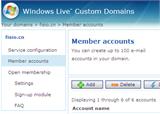Super Review of the Top Three Email Services: Yahoo! Gmail Live
The three major search engine companies, Google, Yahoo, and Microsoft, each offer free email services: GMail, Yahoo Mail, and Windows Live Hotmail. With the launch of Windows Live Mail by Microsoft (replacing the original Hotmail) and Yahoo's announcement to expand mailbox capacity without limits, the competition in email services has become even more intriguing.
Both Yahoo and Google's products are still in their so-called beta versions, a common practice for new generation web products (beta forever). Meanwhile, although Microsoft's Windows Live Hotmail has removed the "beta" label, it will likely continue to introduce new features.
For users, the most important factor in an email service is undoubtedly its storage capacity. When GMail launched in 2004, it shocked the market with a 1GB capacity, prompting Yahoo to increase its mailbox capacity in response. Later, on April 1, 2005, GMail increased its capacity to 2GB and continued to incrementally add more space, less than 1MB per day, but over time, it has now reached around 2.8GB.
Yahoo Mail announced in early 2005 that it would increase its capacity to 1GB and introduced the new interface and features of Yahoo Mail beta in September 2005. Yesterday, it was announced that the capacity would be upgraded to unlimited.
Windows Live Hotmail, formerly known as Hotmail, upgraded from 2MB to 250MB in mid-2005. It then launched the Windows Live Hotmail beta version at the end of 2005 and before the official release, upgraded the Hotmail capacity to 1GB. It officially went online in May this year and increased the capacity to 2GB.
Both Yahoo Mail beta and Windows Live Hotmail have special right-click menus and drag-and-drop functions, making them somewhat similar to traditional desktop email clients like Outlook Express or Thunderbird. On the other hand, GMail has had several unique features and interfaces from the beginning, including labels replacing folders, setting up aliases, and conversation mode that groups messages with the same subject together.
Below is a feature comparison table we have compiled, which we hope will be helpful to users.



